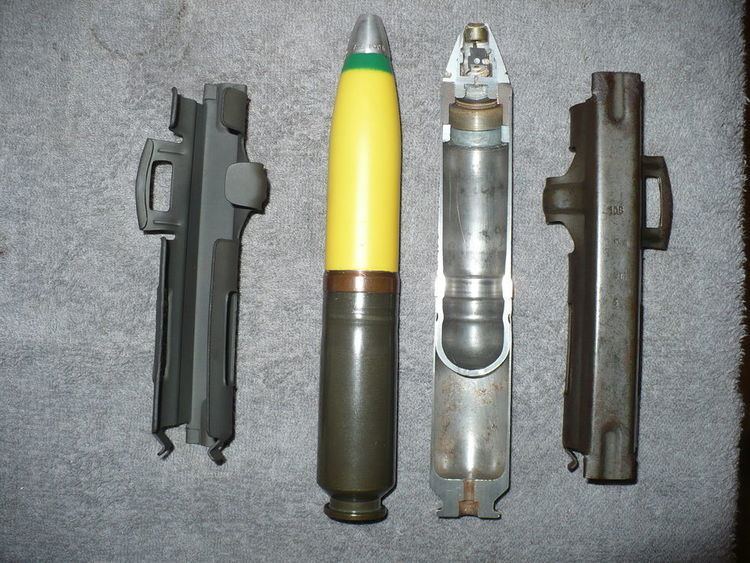 | ||
The Minengeschoss ('mine-shell') was a high-capacity autocannon ammunition originally developed in Germany and used in the Luftwaffe's larger caliber aircraft armament during World War II. This new type of high-explosive shell differed from conventional H.E. ammunition in that it had much thinner walls. The shell was drawn from high-quality steel, instead of having the explosives cavity drilled into a solid shot, which allowed thinner-wall construction and therefore a far greater amount of explosive filler.
Contents
It was used, amongst others, in the Luftwaffe's 20 mm MG FF/M and MG 151/20 cannon, and the 30 mm MK 103 and MK 108 cannon. It was first used in combat during the Battle of Britain in 1940 by the Luftwaffe's Bf 109E and Bf 110C fighters.
Ammunition for 20 mm cannons
The 20 mm M-Geschoss shell (used in M151/20 and MG-FF/M cannons - the same shell was used in both cartridges) had an 18 g HE filling while the typical filler load in 20 mm shells at the time was 6 to 10 g.
Ammunition for 30 mm cannons
In 30 mm caliber different M-Geschoss designs were available: the original blunt-nosed Ausf.A had an 85 g filling of nitropenta (PETN), which was reduced to 72 g in the more streamlined Ausf.C shell (the "missing" B was a practice shell). In comparison, the PGU-13/B HEI round for the GAU-8/A Avenger gun of the A-10 Warthog contains only a 58 g explosive filler, while the 30 mm OFZ shell of Russian GSh-301 and GSh-30-6 cannons has a 48.5 g filler.
Post-war development
After the defeat of Germany in World War II, several countries copied the design and used it for their own post-war aircraft armament, for example in the HE shells of Britain's ADEN cannon and the French DEFA 540. The guns themselves were developments of the German Mauser MG 213.
